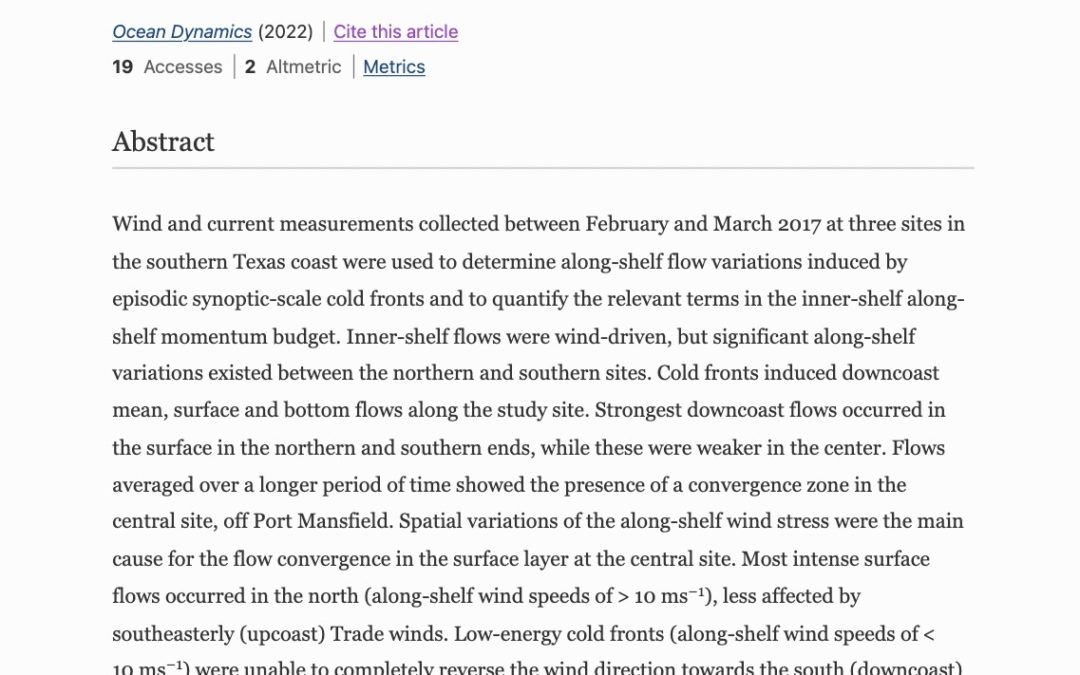Authors: Angélica Romero-Arteaga & Amaia Ruiz de Alegría-Arzaburu
https://doi.org/10.1007/s10236-022-01505-z
Abstract
Wind and current measurements collected between February and March 2017 at three sites in the southern Texas coast were used to determine along-shelf flow variations induced by episodic synoptic-scale cold fronts and to quantify the relevant terms in the inner-shelf along-shelf momentum budget. Inner-shelf flows were wind-driven, but significant along-shelf variations existed between the northern and southern sites. Cold fronts induced downcoast mean, surface and bottom flows along the study site. Strongest downcoast flows occurred in the surface in the northern and southern ends, while these were weaker in the center. Flows averaged over a longer period of time showed the presence of a convergence zone in the central site, off Port Mansfield. Spatial variations of the along-shelf wind stress were the main cause for the flow convergence in the surface layer at the central site. Most intense surface flows occurred in the north (along-shelf wind speeds of > 10 ms−1), less affected by southeasterly (upcoast) Trade winds. Low-energy cold fronts (along-shelf wind speeds of < 10 ms−1) were unable to completely reverse the wind direction towards the south (downcoast) in the southern and central sites, due to the stronger influence of Trade winds. Surface wind stress and pressure gradients were the dominant terms in the along-shelf momentum budget, while the bottom stress and Coriolis terms were considered negligible. The wind-stress term was dominant in the north, while pressure gradients associated with local sea-level responses to the wind forcing were dominant in the southern site. This study highlights the importance of pre-front wind characteristics in spatial variations of the along-shelf flow during cold fronts.
Keywords: Nearshore currents, Extreme events, Wind-driven circulation, Gulf of Mexico, Vertical currents, Field measurements


Recent Comments